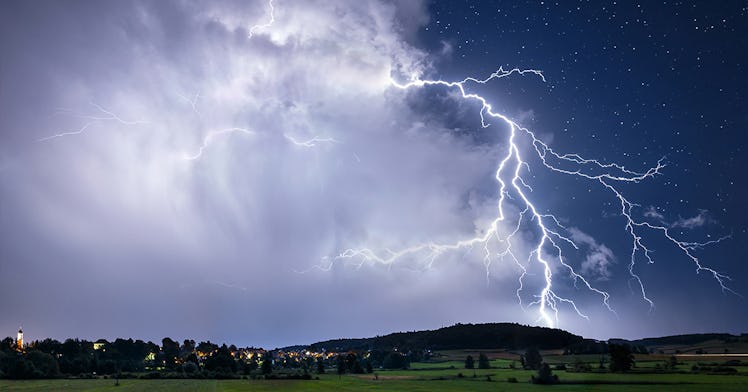How Do You Explain Thunderstorms To Your Kid? Ask A Lightning Physicist
Lightning physicist (actually a job!) Joseph Dwyer explains thunderstorms in child-sized morsels so you know what to say when your kid asks.

Your kid has endless questions about the endless wonders of the natural world, and while you have an arsenal of apps to help you, you don’t have an army of real-life professors at your disposal — until now. To help you form a coherent answer when your kid asks what’s making those clouds so dark, here’s lightning physicist Joseph Dwyer to break thunder and lightning down into child-sized morsels. Dwyer has authored more than 60 academic papers on the topic and has been featured on PBS, Discovery, and the BBC, but his real credentials lie in the 12 years he spent chasing sky-born kilowattage in Florida without getting electrocuted even once.
YOUR KID’S QUESTIONS
Where does lightning come from?
Up in the clouds, there all sorts of little bits of rain and snow bouncing around. When those pieces bump into each other, they develop an electric charge, which is just like when you drag your feet across the carpet and get a shock, only way more powerful. Most lightning just shoots around in the cloud and we usually don’t even notice it, but every now and then some leaks out and shoots down to the ground. When that happens, the bright thing you see is only as wide as your finger.
The bright thing you see is only as wide as your finger, and hotter than the sun.
Why is it so loud?
When lightning shoots toward the ground, it looks like it’s happening all at once but it’s actually moving really fast – about 60 miles per second. When you’re in the car, you might go 60 miles in an hour, so lightning is that much faster than a car. As the lightning shoots through the air, it heats that air up because lightning is hotter than the sun. When air gets that hot, that fast, it explodes, which is why you hear thunder after you see lightning.
Why is the thunder always after the lightning?
Because thunder is a sound, and sound is a slow poke. Lightning is so bright that you can see it for miles and miles, but thunder can’t always go that far. So, sometimes you see lightning and don’t even hear it, which means it’s pretty far away.
Remember that time we went to Florida, and there was lightning the whole time?
Florida is the lightning capital of the country, because it’s surrounded by warm water and the air has lots of water in it. The winds blow from all around, which pushes all that wet air up into the clouds. Wet air is like a battery for a thunderstorm – it fills the clouds up with all those bits of rain and snow that start bumping into each other and that makes more lightning.
YOUR QUESTION
If my kids are playing in the ocean and we can see lightning far out in the distance, when should we worry?
If you can see lightning but not hear it, it’s probably too far away to be dangerous. But once you can hear something, you need to get out of the water, and not just onto the beach. When lightning strikes the water, the electricity won’t just stop at the sand, so you’re in danger until you’re inside a structure with 4 walls and a roof or, if there’s nothing else, then a car.
This article was originally published on